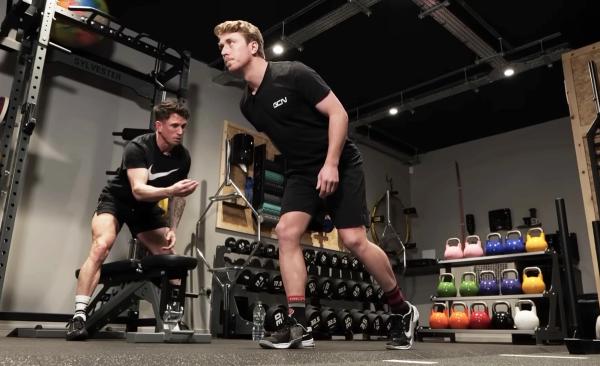7 key strength exercises for cyclists
What are the best strength exercises to help you become stronger and faster on your bike?
Danny Walter
Head of Editorial Production
If you're looking to get stronger and faster on the bike then strength training is something you should pay serious attention to.
While you can achieve a certain level of fitness from just riding your bike, if you're really looking to up your game then you need to incorporate some additional strength training into your routine, to target specific muscles groups within your body. This won’t just improve your overall performance over time it will also help protect against injuries.
To help you incorporate strength training into your regime, Hank’s been to the local gym to find out about the best exercises that benefit cyclists. Are you warmed up and ready to go? Let's get into it!
Find loads more training sessions and advice here.
The seven best strength exercises for cyclists
1. Bulgarian split squat
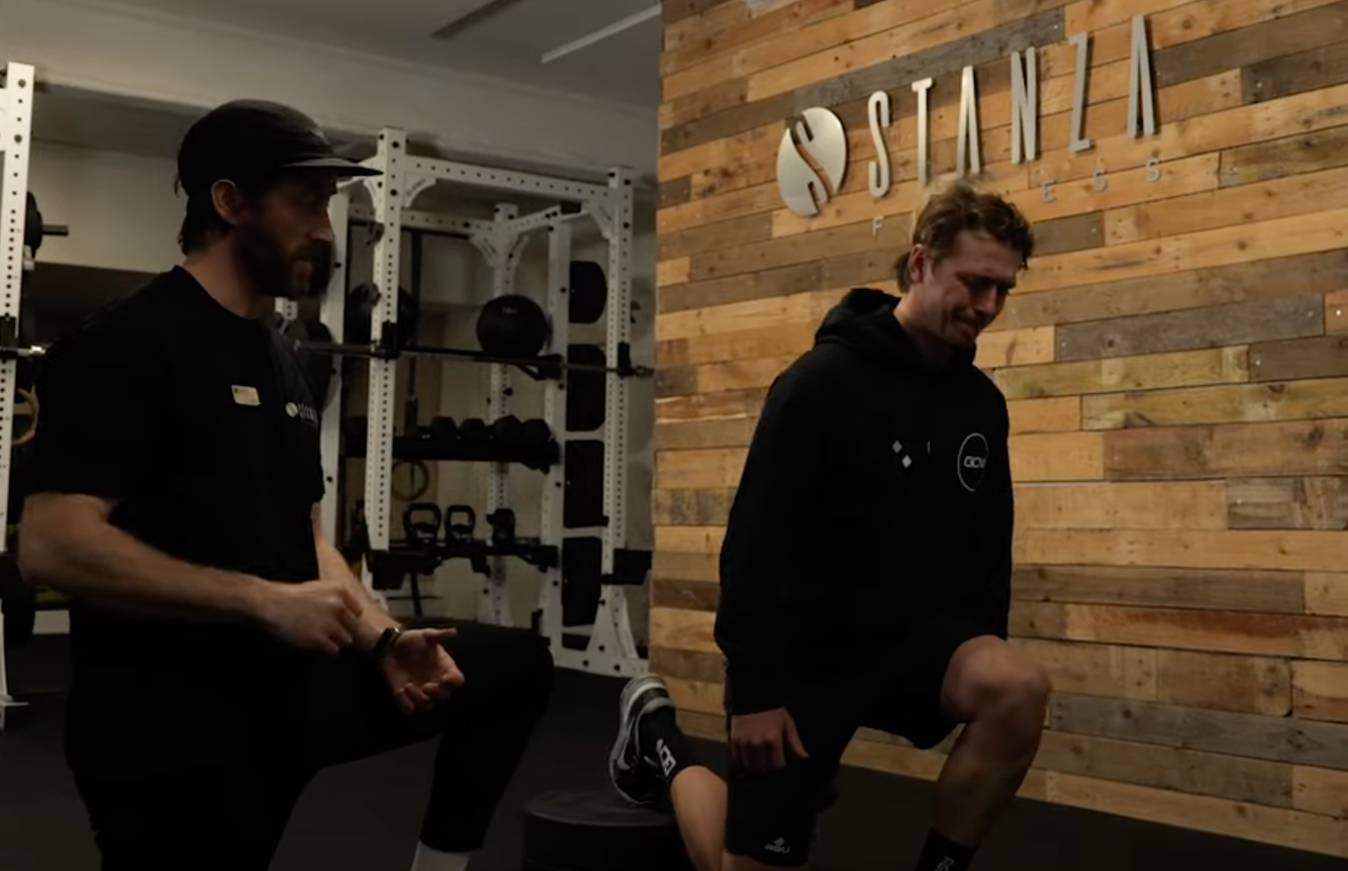
© GCN
Hank gets into position for the Bulgarian split squat
Why do this? This is a routine that works the glutes, hamstring and quads. It’s a unilateral exercise, meaning we’ll start with one leg then shift to the other side, to help build equal strength in both legs.
Method: Working one leg at a time, choose which side you want to start with. Place one leg behind on a raised platform – you could use a simple step or box for this. Then squat down over the front foot, keeping your knee in line with your ankle. Descend into the squat until your back knee touches the ground, then drive back up into a standing position with your arms by your side. That’s one rep. Once you’ve completed a set of 6-8 repetitions on one side, switch to the other side and repeat. Try and focus on your balance and stability throughout.
Number of reps: 6-8 repetitions on one leg then switch to the other leg. Ideally do 3-4 sets of repetitions for each leg.
Next steps: You don’t need to hold any weight here, body weight should be sufficient to start with. As you look to progress further then loading up with a little weight is advised. You can either hold a light dumbbell in each hand and or a kettlebell out in front of you.
2. The deadlift
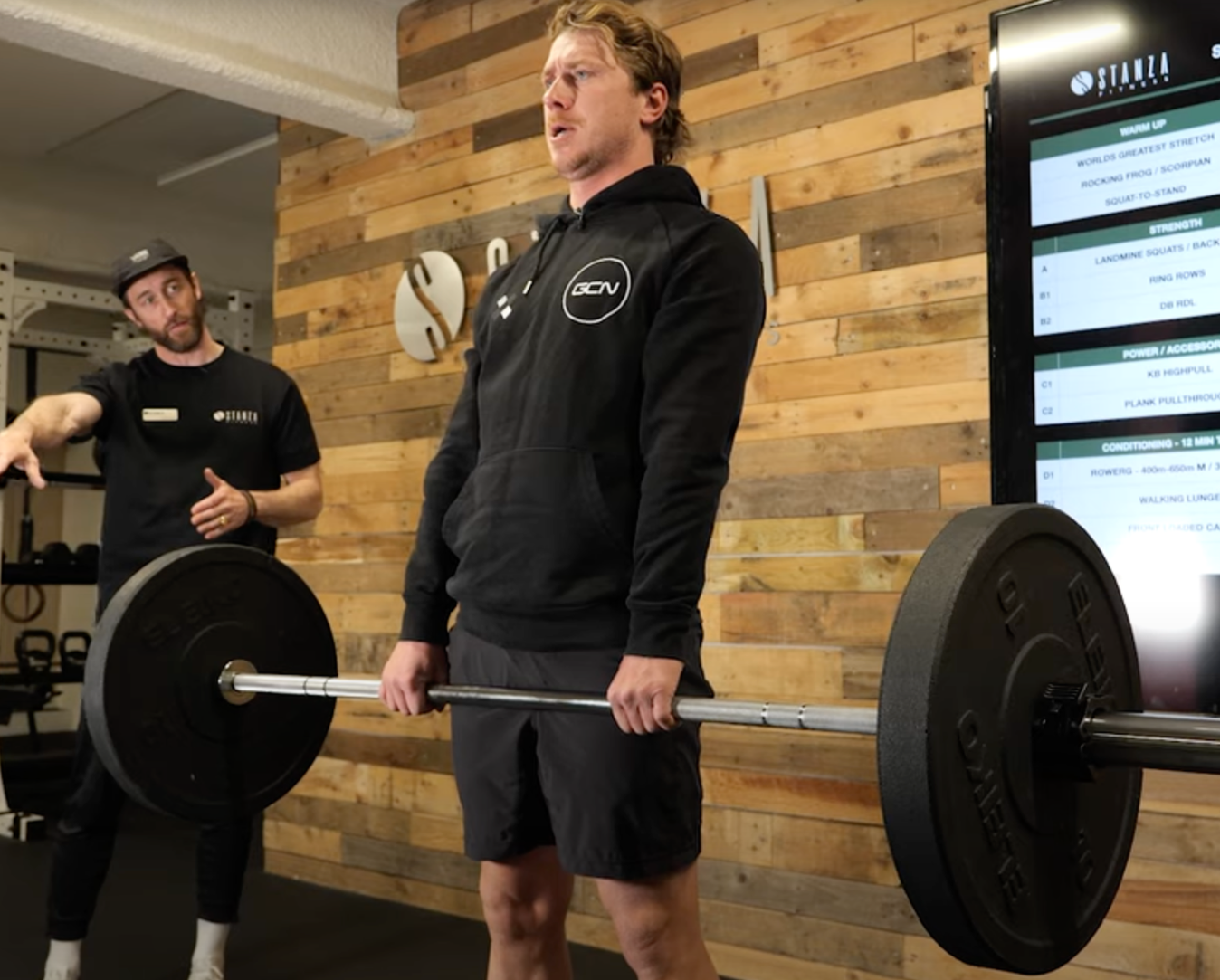
© GCN
Start with a low weight on the deadlift and over time slowly add more to help build muscle
Why do this? This is a great exercise if you’re short of time as it targets a lot of different muscle groups and builds strength, muscle and mobility. If you don’t have access to a barbell and are working out at home you can get away with a kettlebell although that becomes limiting in terms of progression. This exercise is great for working the posterior chain – the back part of the body.
Method: Start in an upright position with just a small weight on the bar. Your feet should be relatively close together, around shoulder width apart. Elbows should be on the outside of the body, as you try to keep the bar nice and close to the shins. As you lower the bar try to keep your bum high so you can feel a stretch in your hamstring. Your back should be flat, while you focus your gaze on a spot on the floor in front of you.
To lift the weight back up push through your feet, keeping your back flat as you come into an upright position with the bar extended. Hold for a second before repeating the movement back down. Slow, controlled movement is key here. Don’t be tempted to put too much weight on the bar. Keep it light and steady and gradually increase by small increments over time.
Number of reps: 6-8 repetitions for 3-4 sets.
Next steps: As you become more comfortable with this exercise over time, gradually increase the weight, but don't rush it. Adding a kilo at a time is plenty.
Read more: How to train for endurance cycling
3. The reverse lunge
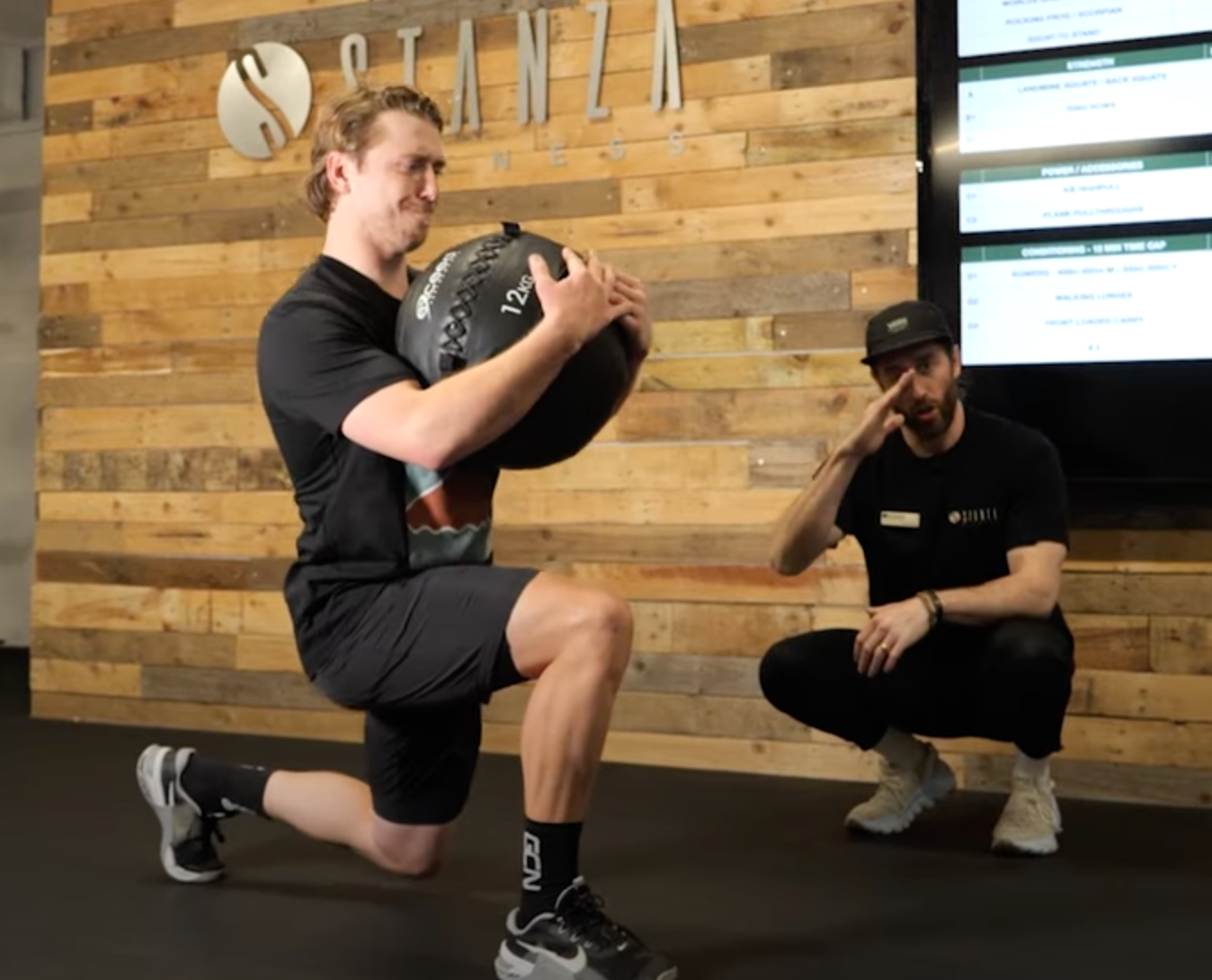
© GCN
Once you've mastered the reverse lunge try it with an awkward shaped weight but keep focus on your balance
Why do this? This is a unilateral exercise which requires you to start on one side of the body before switching to the other. Most people are naturally stronger on one side and this exercise helps to develop muscles that will aid you in putting more overall power through your pedal strokes.
Method: Choose a side to start on. Push one foot behind you and drop to a lunge, loading your weight over the front knee which should be in line with your front ankle. Hold the position for a moment before steadily driving back up to an upright position. Repeat on one side for 6-8 reps before switching to the other side for a further 6-8 reps. Start without using weight, with the option to progress to a weighted squat over time.
Number of reps: 6-8 reps per leg for 3-4 sets.
Next steps: Once you have this exercise dialled in you can begin to load it with a little weight. If you have access to a more awkward weight to hold, like the 12kg ball that we use in the video, it can help offer a greater challenge as well as mix things up a little. You can use a dumbbell or kettlebell if that’s all you have, just remember to keep that weight over the front foot when you squat down.
4. The leg press
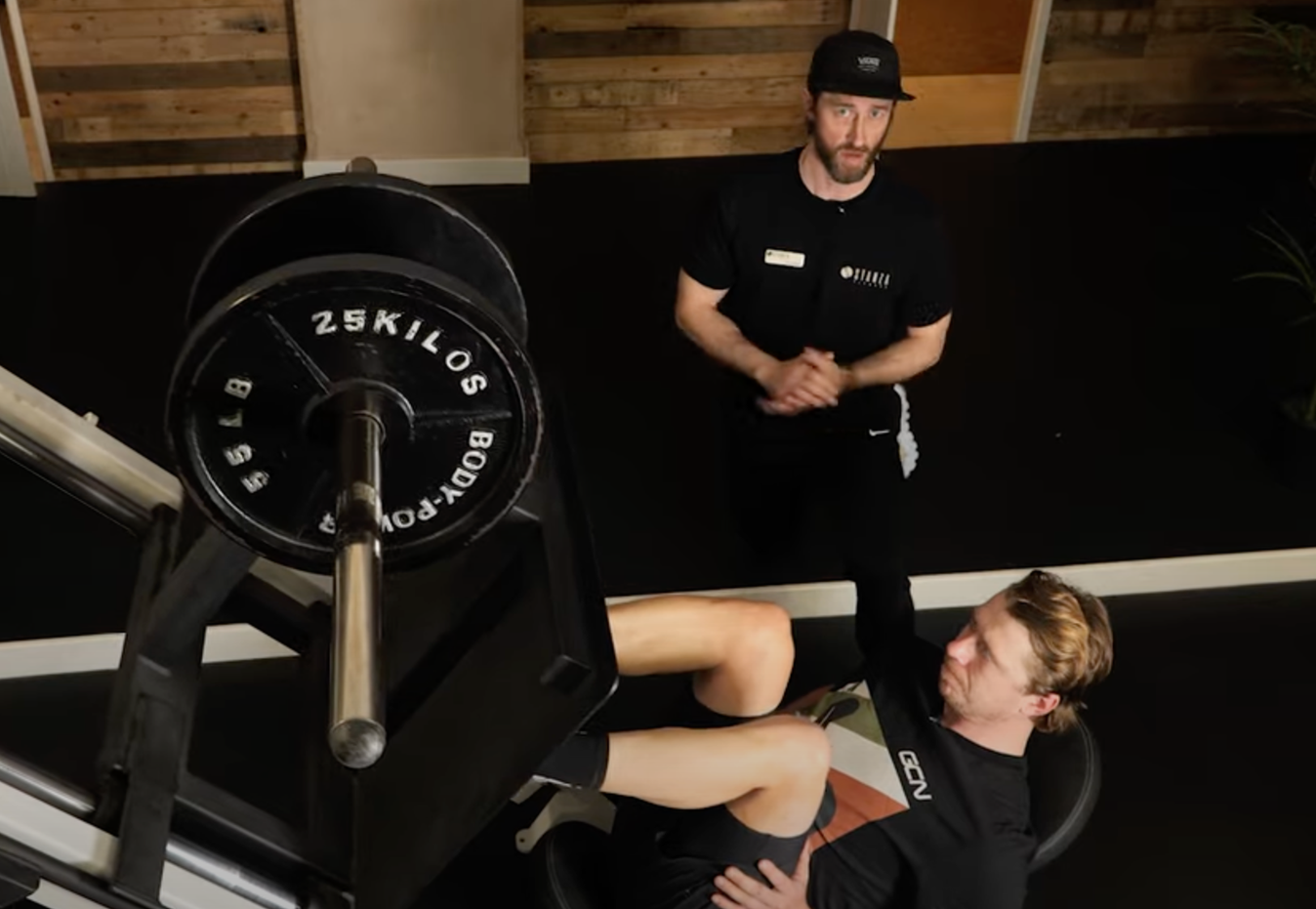
© GCN
This is one for the gym and while it's a hefty piece of equipment it's not as scary as it looks
Why do this? This exercise needs specific equipment which you’ll find at most gyms but it's a great lower body exercise. It looks a bit daunting and scary but actually it’s relatively straightforward. This works the quads, glutes and hamstrings.
Method: Starting with a low weight take to the seat and position your feet on the foot plate in a similar position to how they'd be for a squat. Drive the machine up slightly so that your legs are almost straight, without locking them, then release the handles that you should find at the side of the equipment. Your legs are now carrying the weight, so slowly allow your knees to come towards your chest, controlling the release of the weight down. From that point gently drive the weight away from your body back up to the starting position with legs extended.
Number of reps: 6-8 reps per leg for 3-4 sets.
Next steps: Start off with a low level of weight and gradually increase over time to build your strength.
5. Kettlebell swing

© GCN
Slowly and with control, swing the kettlebell from the squat position
Why do this? This exercise is another good one for your posterior chain, targeting similar muscles to the deadlift. It's a good, explosive exercise to help generate power and improve general mobility.
Method: Start with a light kettlebell and while standing with your feet just over shoulder width apart, place the kettlebell just in front of you. Push your hips back and bring your chest towards the floor while maintaining a nice flat back. Grab the kettlebell so you're effectively creating a tripod between your legs and arm position. Then drag the kettlebell back between your legs and lift forward by nudging your hips in a forward thrust as you come into an upright position.
Allow the momentum to help swing you back down into a squat with bell between your legs as you push your hips back. Repeat the movement by bringing the kettlebell back up to no more than a horizontal position as you rise up. Try to maintain a neutral spine, ensuring that the hips are doing the work rather than over-swinging the arms as you try and find a steady rhythm.
Number of reps: 10-20 reps for 3-4 sets.
Next steps: Only increase the weight here by small amounts. This is not an exercise where you want to challenge yourself to the heaviest weight you can lift!
Read more: Dan Lloyd: Why I've decided to change my lifestyle
6. Step-up
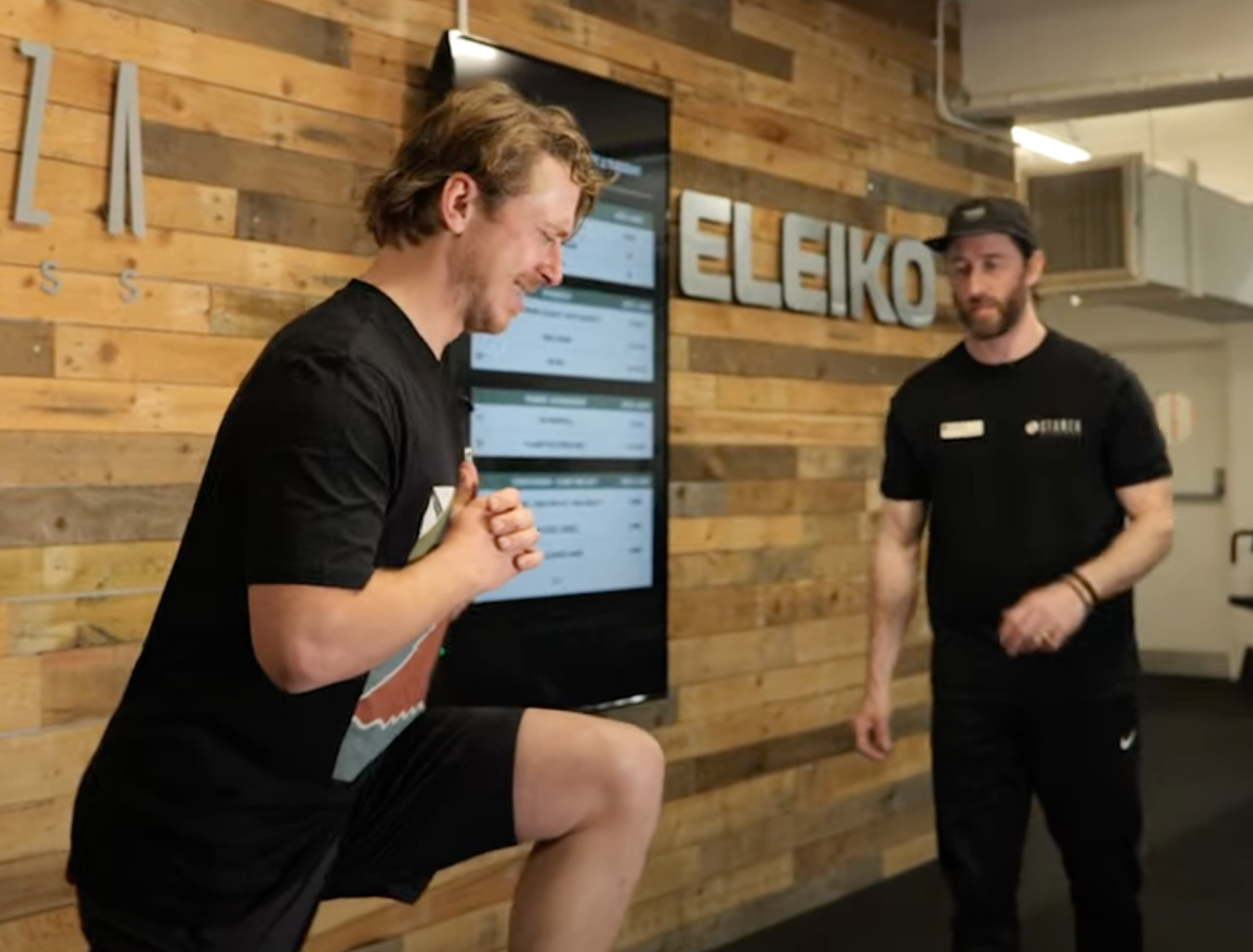
© GCN
A straightforward routine that drives strength through one leg then the other
Why do this? You can easily do this at home using a wall, bench or box. Tackle one leg at a time on a bench around knee height which will help strengthen your glutes, quads, calves and hamstrings.
Method: Place one leg on the step, so the knee is at a 90 degree angle with your hip. Then focussing you attention on that raised leg, drive your weight through the bench to lift the other leg off the ground and up onto the bench. Once you reach the upright position on the bench slowly descend the leg down to the ground again. It is important to keep the focus on driving through the raised leg rather than one grounded behind you.
Number of reps: 6-8 reps per leg for 3-4 sets
Next steps: Start without weights but add in some light dumbbells or a kettlebell to help the progression of strength building.
7. Plank shoulder tap
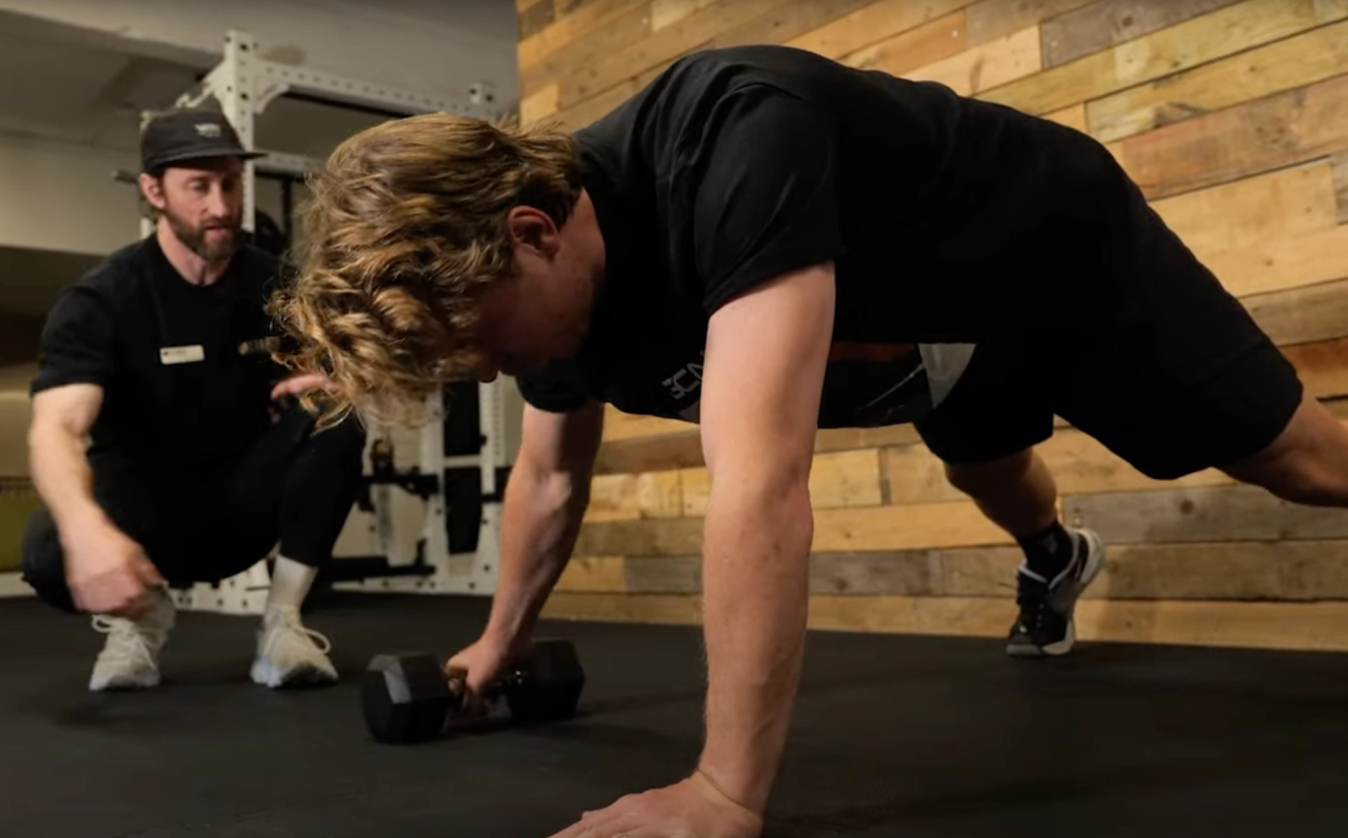
© GCN
A great exercise for developing core strength which helps maintain position on the bike
Why do this? This is targeted towards your body's core in isolation and will help maintain body position on the bike better over time, which will impact your ability to put power through the cranks. It will also help you stay out riding for longer and maintain a good posture position on the bike. This exercise challenges stability, strength and balance.
Method: Start in a plank position with both hands on the floor, shoulder-width apart and your legs extended out behind you with your knees off the ground. You could start this without any weights by simply lifting an arm at a time and tapping the opposite shoulder with it. However, we’re going to introduce a little bit of weight from the beginning here.
Set a light dumbbell or kettlebell just outside one side of your body while in the plank position. Using the arm that is furthest from the weight grab it with your hand and slowly drag it across, underneath you to the other side of your body. Put your hand back to the ground in the plank position. Then using the other arm reach for the weight and drag it back across to its starting position. Try not to rock your hips too much and keep one arm grounded as straight as possible with the shoulder stacked over the wrist as you move the weight across.
Number of reps: 6-8 reps for 3-4 sets
Next steps: Once you have become comfortable at this level, try using a slightly heavier weight. The focus should remain on keeping your core stable and shifting the weight in a slow and controlled manner.
Okay, that's it! If you've tried any or all of those out, well done! You should find that they will slowly increase your strength and performance on the bike over time.
For more training-specific features, routines and advice check out our dedicated section on the GCN website.
.jpg?rect=957,780,3097,3060&w=600&auto=format)








